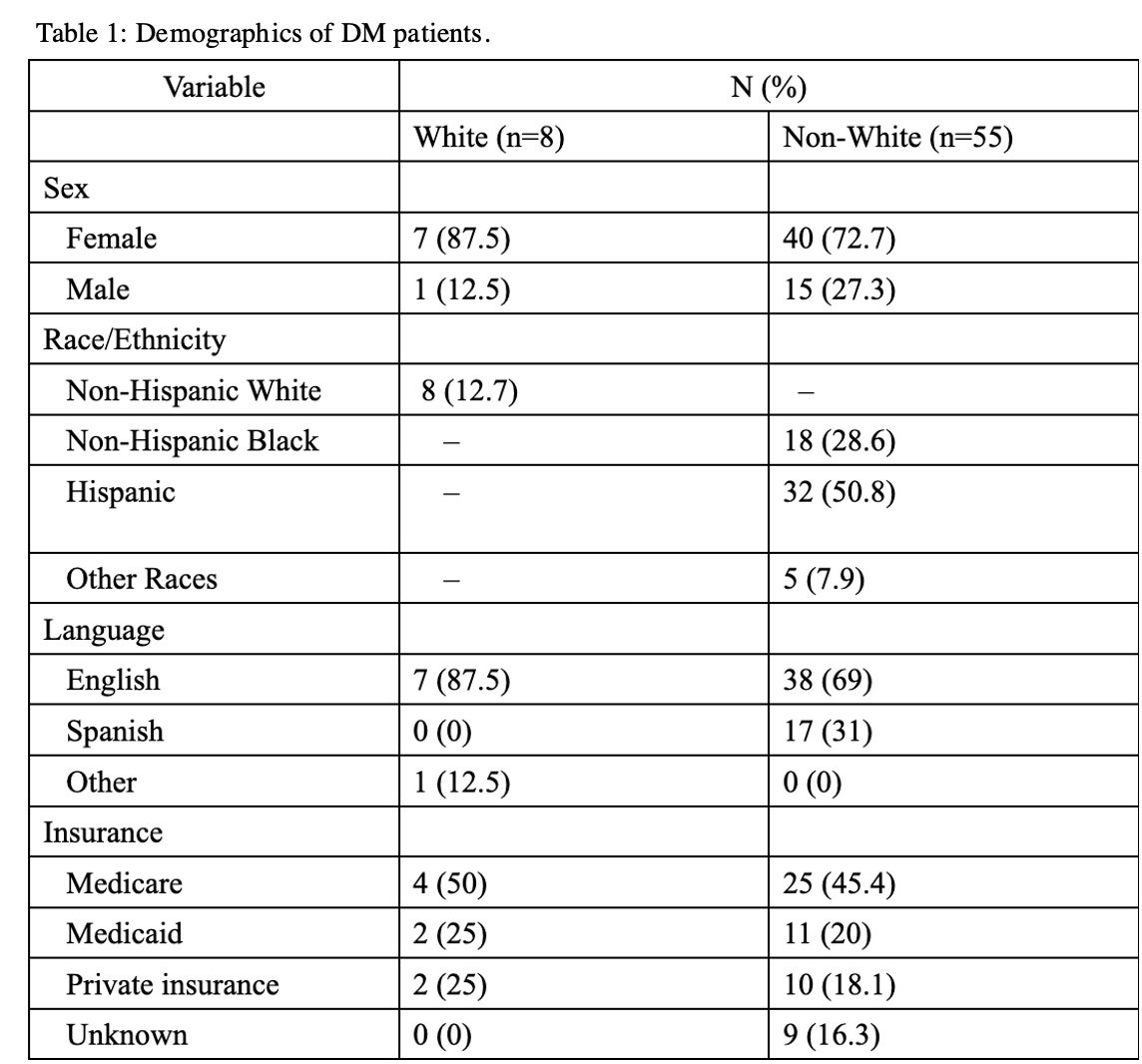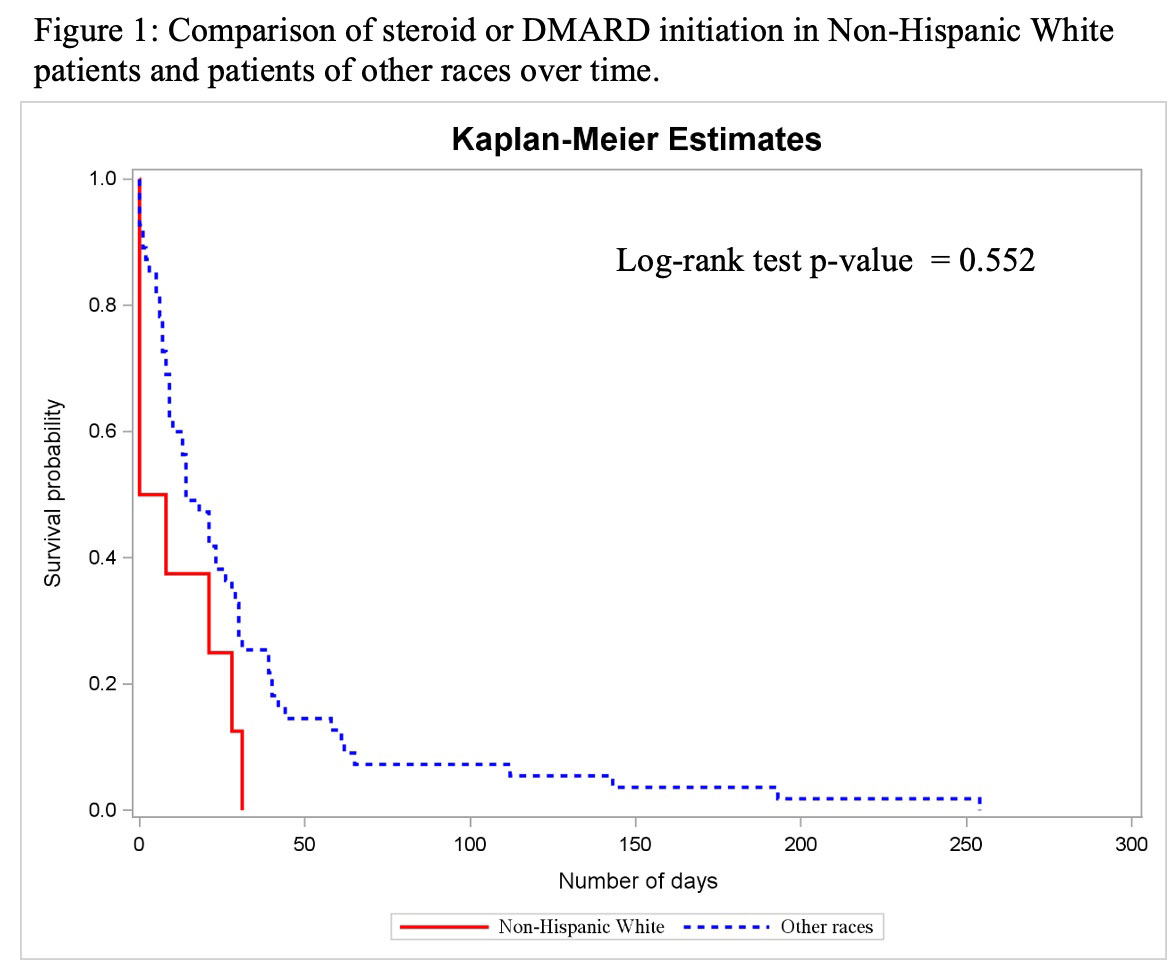Session Information
Session Type: Poster Session D
Session Time: 1:00PM-3:00PM
Background/Purpose: A lack of education in dermatopathology of non-white skin is of growing concern in the field of medical education. Diseases such as Dermatomyositis (DM) with pathognomonic dermatological features rely on swift recognition for diagnosis and treatment. There are no studies comparing detection and treatment initiation in patients with DM of different races and ethnicities. Our aim was to determine if there was a delay in detection and treatment initiation for DM patients of different skin tones.
Methods: Patients from Montefiore Medical Center who met 2017 EULAR/ACR classification criteria for DM were included in this cohort study. Patients were excluded if the initial rash presentation or therapy initiation could not be determined. Patient records were searched for date of first cutaneous rash and date of first steroid or DMARD initiation. The first rash had to be documented by a physician with descriptive findings consistent with a pathognomonic DM rash. The median number of days between rash identification and therapy initiation was compared for patients of different races, including non-Hispanic White (NHW), non-Hispanic Black (NHB), Hispanic, and Other (including Asian and Unknown). We did not have disaggregated data and acknowledge that skin color varies between Hispanic and other groups; therefore, we compared data in white vs non-white skin tones. Statistical analysis included Chi-square tests and Kaplan Meier (KM) curves.
Results: Of the 79 patients with DM in this cohort, 63 patients were included for analysis. Among the 63 patients, 8 (12.7%) were NHW, 18 (28.6%) were NHB, 32 (50.8%) were Hispanic, and 5 (7.9%) were identified as Other as described in Table 1. The median number of days from identification of first rash suggestive of DM until initiation of a DMARD or steroid was 4 days for NHW, 21 days for NHB, 14 days for Hispanic, and 21 days for other. When comparing the median number of days for treatment initiation for NHW to all other races, the median values were 4 and 14, respectively (p = 0.055), as described in Table 2. KM curves showed prolonged time to diagnosis and treatment in all other races when compared with NHW.
Conclusion: While there was not a statistically significant delay, on average it took clinicians longer to diagnose and treat DM in patients of color. We acknowledge that language proficiency and insurance access can confound therapy initiation. However, the results of this study emphasize the importance of increasing education in dermatopathology of non-White skin to improve detection and treatment of DM and other diseases with predominantly dermatological features. Future studies with larger sample sizes are needed to further elucidate the long-term complications of this health disparity.
To cite this abstract in AMA style:
Weisleder H, Valle A, Xie X, Mahmood S. Racial Disparities in Diagnosis and Treatment of Patients with Dermatomyositis of Different Skin Tones [abstract]. Arthritis Rheumatol. 2022; 74 (suppl 9). https://acrabstracts.org/abstract/racial-disparities-in-diagnosis-and-treatment-of-patients-with-dermatomyositis-of-different-skin-tones/. Accessed .« Back to ACR Convergence 2022
ACR Meeting Abstracts - https://acrabstracts.org/abstract/racial-disparities-in-diagnosis-and-treatment-of-patients-with-dermatomyositis-of-different-skin-tones/



